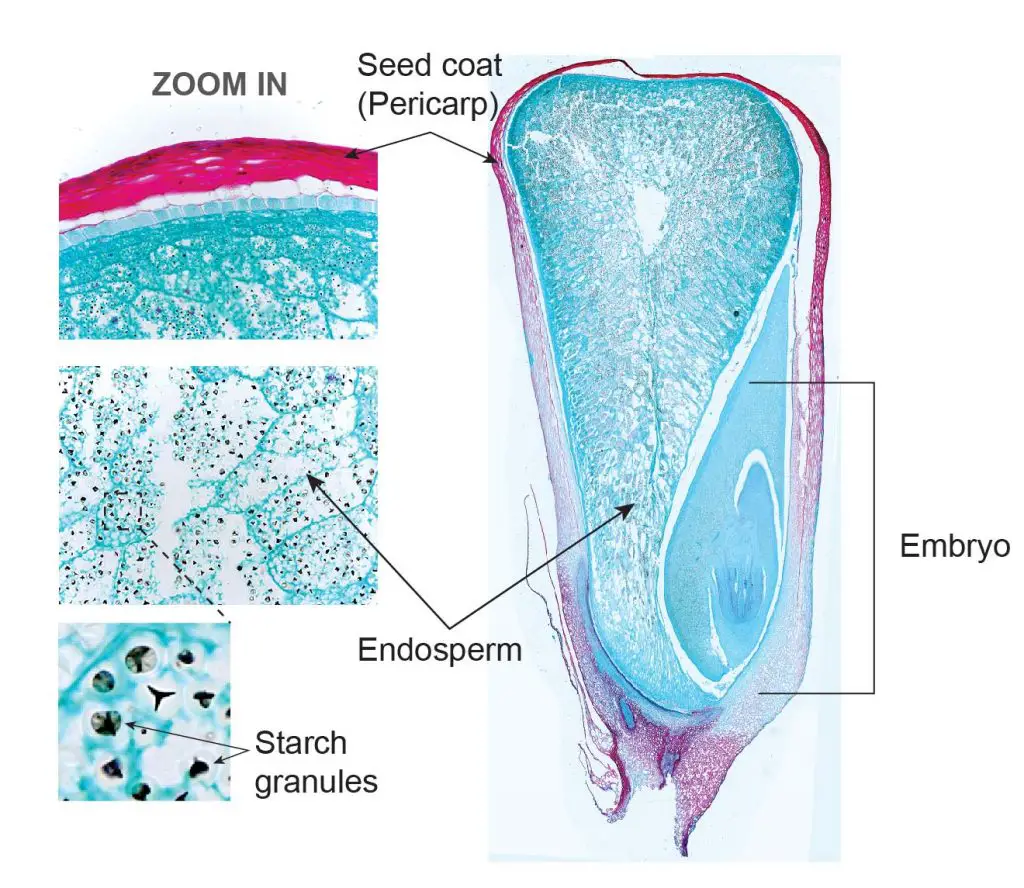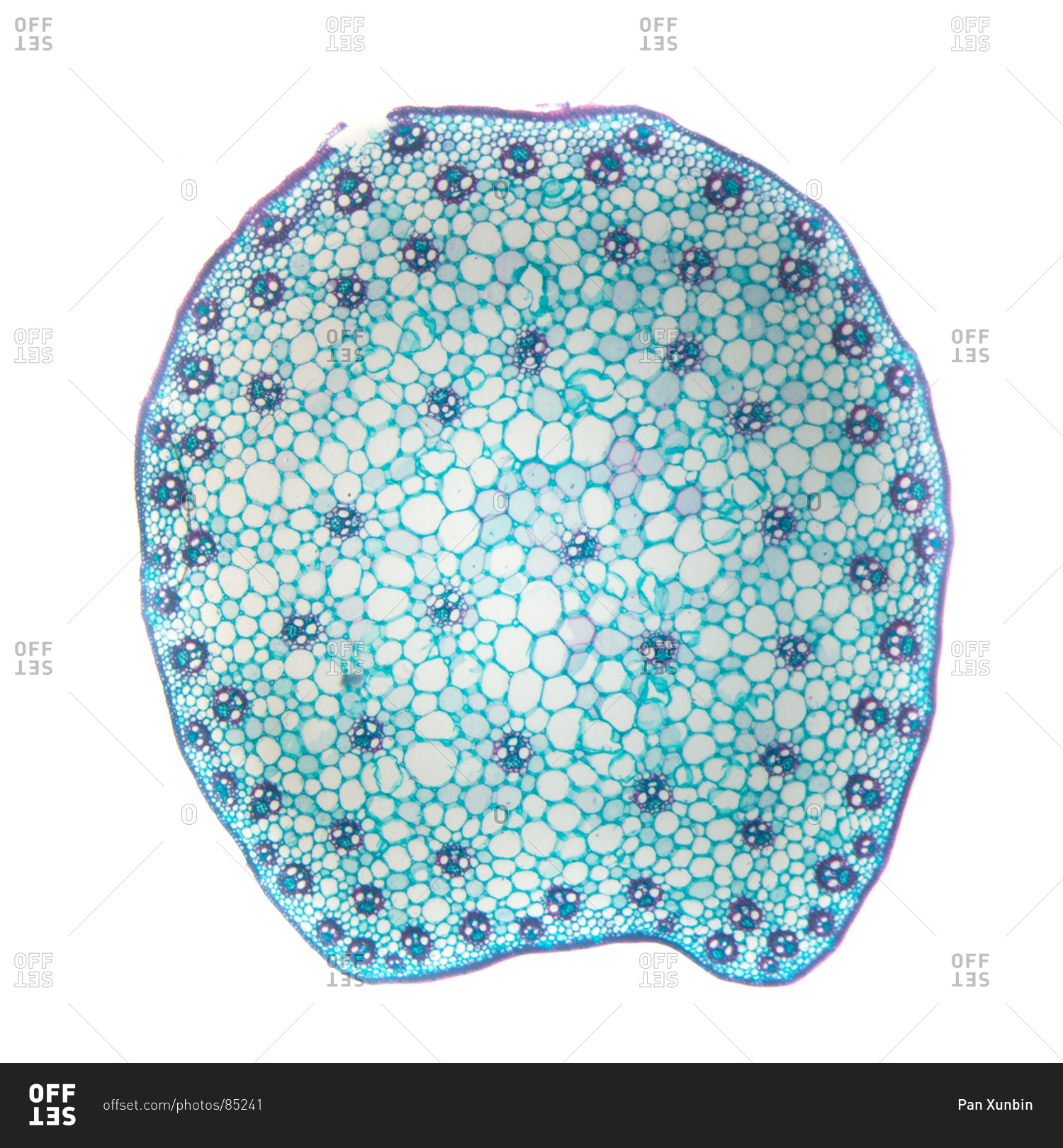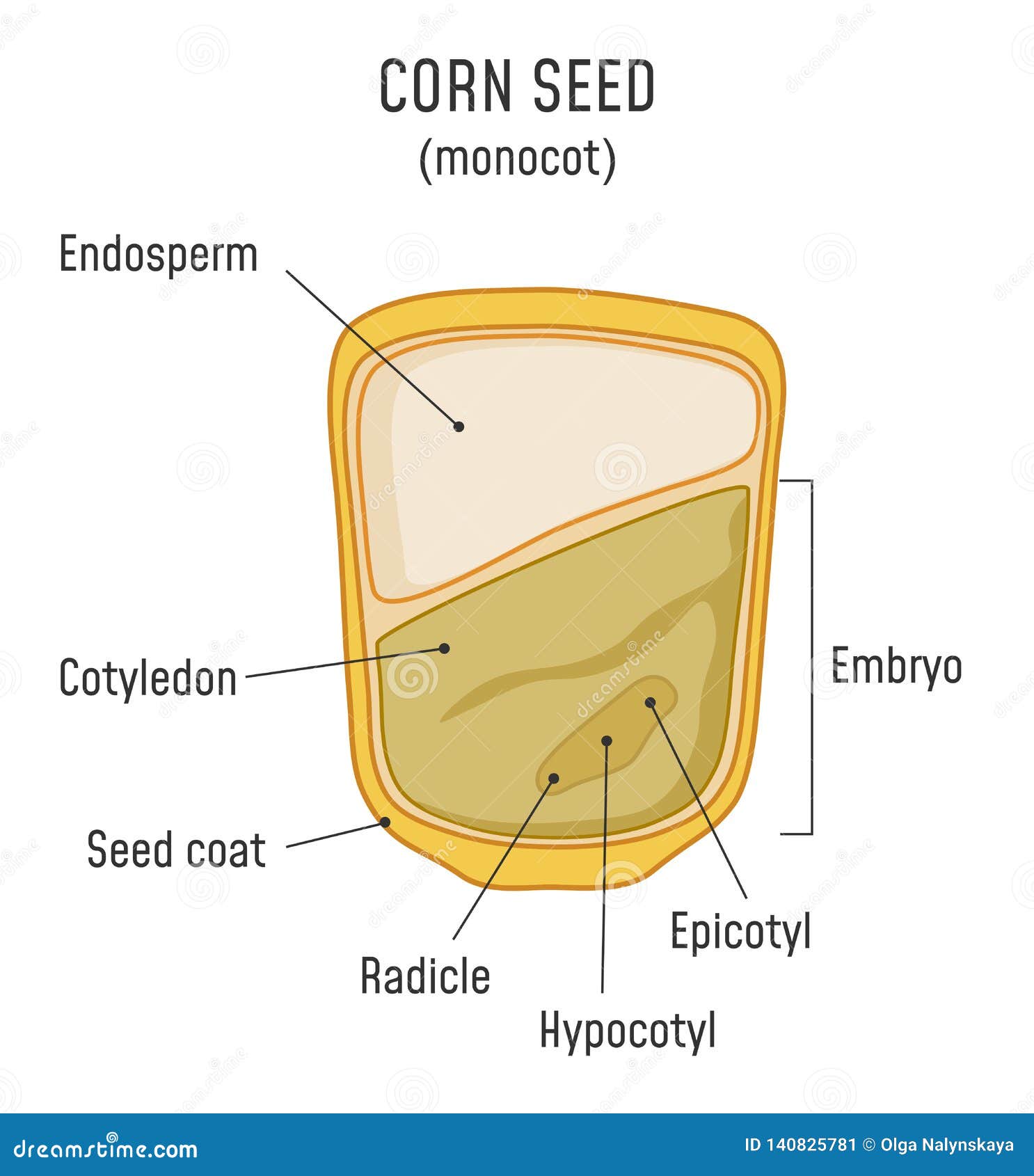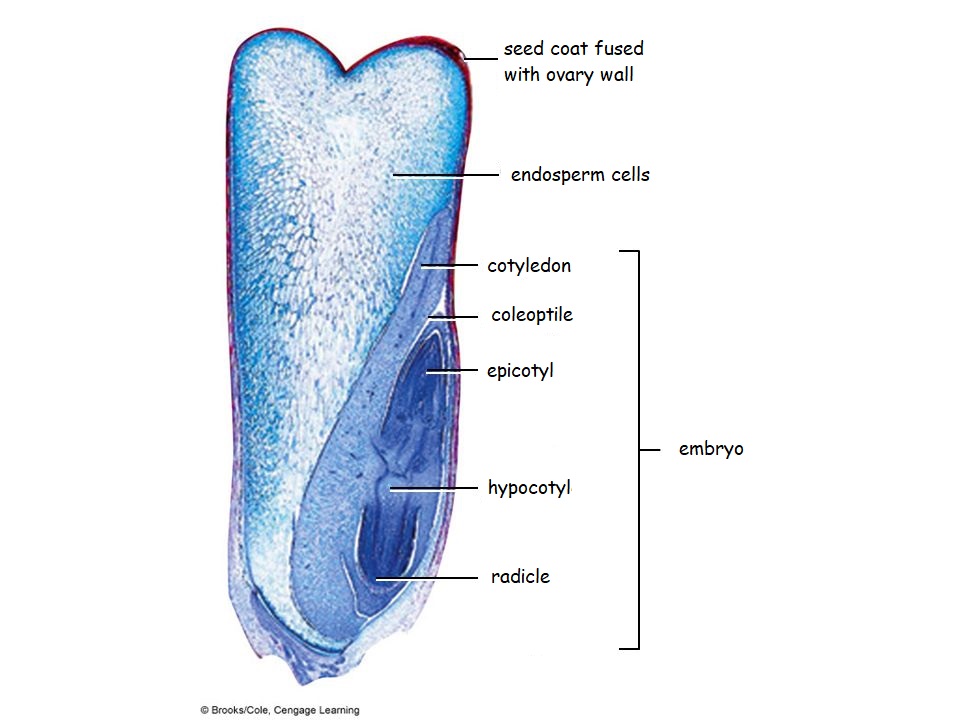
Corn Seed Diagram images
Cross section of corn seed. Sarah Greenwood. CC BY-SA 4.0. In grasses, like the corn in the illustration above, the endosperm is the major energy and nutrient storage tissue. This is different from the kidney bean, where the cotyledon is the storage organ. There is a cotyledon in the corn seed as well, but instead of storing energy and.

Corn Branch Root Zea mays root cross section with lateral … Flickr
Filo gèn. CC BY-SA 4.0 ). Learning objectives By the end of this lesson you will be able to: List three functions of a seed and name the seed part that has that function. Identify the parts of the embryo and the structures they become. List the types of nutrients that are stored in seeds.

Cross Section Of Corn Stock Photo Image 40342087
Monocot corn stem cross section showing vascular bundles. Melissa Ha. CC BY-NC 2.0. In monocot vascular bundles the phloem is always oriented toward the outside of the plant and the xylem toward the inside. There is no cambium and no secondary growth. Around the outside of the vascular bundle is a layer of parenchyma cells called the bundle sheath.

Plant tissue under a microscope xylem and phloem Rs' Science
Carpel structure, cross section. Jmprouty. CC BY-SA 3.0. A fruit, in the botanical sense, is the ripened ovary together with the seeds within the ovary. People often think of a fruit from the culinary point of view, considering it to be the part of a plant that has seeds and when ripe is ready to eat, and think of vegetables as a savory food.

Monocot Germination Corn Seedling photo Plant science, Botany, Biology plants
The ground tissue is separated into an outer cortex and a central pith. The epidermis borders the entire stem. Image labeled from Berkshire Community College Bioscience Image Library (public domain) Figure \(\PageIndex{5}\): Cross section of a corn (Zea mays) stem, an example of an atactostele, at 40X magnification. Vascular bundles are.

Fresh Corn Crosssection stock photo. Image of background 57433236
Describe the general characteristics seed plants. Name the phyla discussed in the lab and give an example of a plant from each. Recognize and identify plant specimens viewed in the lab, both slides and live samples. Understand the basic gymnosperm and angiosperm life cycle. Recognize the difference between a male and female pine cone.

Corn stem cross section, with typical monocot arrangement of vascular bundles stock photo OFFSET
Grades K-2: Parts of a Corn Seedling » » The Parts of a Corn Seedling (Zea mays, Monocotyledon) Part of the Biodiversity Counts Curriculum Collection. More in Plant Morphology Monocotyledon: Monocotyledon embryos have one cotyledon that absorbs food. Monocots usually have narrow leaves with parallel veins, and flower parts in multiples of three.

Longitudinal crosssection of corn kernel [98]. Download Scientific Diagram
12-frame longitudinal cross-section of a corn seed. November 5, 2011 Greg Leave a comment. A x20 magnification micromosaic using 12-frames of a longitudinal cross-section corn seed taken using the Canon 5D MkII and the research trinocular microscope.

Corn Seed Structure Monocot Stock Vector Illustration of grain, bean 140825781
What is dicot plant? Examples of dicot plants Difference between monocot vs dicot Seed Leaves Stem Roots Flowers Questions and activities The vascular systems The flowering plants have vascular systems, which function like the blood vessels that can bring water and nutrients to every cell.

Corn cross section isolated on white background Stock Photo Alamy
Figure 4.6.3.1 4.6.3. 1: The external structures of a bean seed, an example of a eudicot (7X). The seed coat surrounds the seed. There is a round micropyle, where the pollen tube originally entered the ovule. The oval hilum is a scar from where the ovule was attached to the ovary. Image by Melissa Ha ( CC-BY ).

Jan Xue’s corn stem crosssection BIOL/APBI 210 Lab Information
S uccessful emergence (fast & uniform), while important, does not guarantee successful stand establishment in corn. The next crucial phase in the life of young corn plants is the initial establishment of a vigorous nodal root system. Successful stand establishmend is largely dependent on the initial development of nodal roots from roughly V2 (two leaves with visible leaf collars) to V6.

Corn cob cross section. stock image. Image of isolated 21038899
Cross sections of kernels from corn varieties classified as hard (A), intermediate (B), and soft (C), showing maximum ranges of vitreous and floury endosperm within each variety (I mostly floury and III, mostly vitreous).. 100% female, will eventually form the pericarp that in the specific case of cereals is firmly attached to the seed. In.

2. The corn kernel structure. Download Scientific Diagram
License: CC BY: Attribution. 5.1: Seed Plants Lab is shared under a CC BY 4.0 license and was authored, remixed, and/or curated by LibreTexts. In this lab, you will observe samples of seed plants as well as their structures and determine the characteristics of each plant while explaining the functions of each part. After, you will be able..

Corn cross section hires stock photography and images Alamy
Zea mays. Zea mays (corn) is often used as a model organism for monocot anatomy. Figure 11.1.2.1 11.1.2. 1: The images above show a corn seedling in two different stages of development. The first image is of the corn seedling at an earlier stage. It has produced a shoot (with one cotyledon) and a long root (radicle).

Reading Seed Plants Biology II Laboratory Manual Course Hero
1. Seed and Seedling Soaked and dry seeds of a monocot (corn) and a dicot (bean) are provided. A. Monocot - These seeds have only one cotyledon (seed leaf). Place the flat side of the corn kernel on several paper towels. With a sharp Show transcribed image text There are 2 steps to solve this one. Expert-verified Step 1 View the full answer Step 2

Biology 2
The Seed: The Beginnings Of The Corn Plant Look at a corn cob - you will see the seeds! The kernels that you eat can also be used as the seed source to start new plants. Don't worry; the corn kernels that you eat won't grow in your stomach. Specific corn plants are set aside to provide seed. Corn Growth Stages